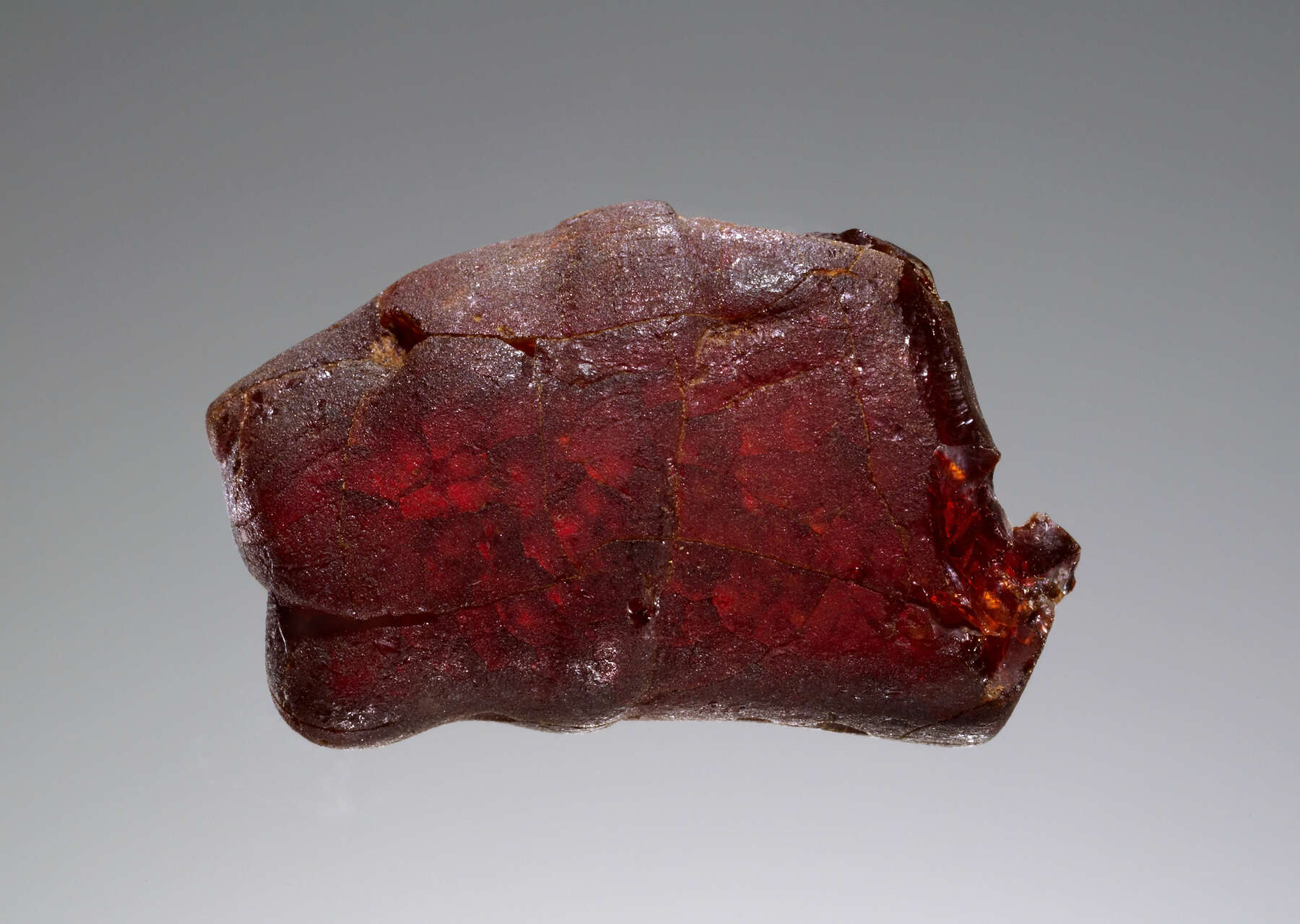36. Pendant: Lion’s Head
| Accession Number | 77.AO.81.10 |
| Culture | Etruscan |
| Date | 500–480 B.C. |
| Dimensions | Height: 15 mm; width: 16 mm; depth: 26 mm; Diameter of suspension hole: 2 mm; Weight: 3.6 g |
| Subjects | Etruscan culture; Jewelry; Lion |
Provenance
–1977, Gordon McLendon (Dallas, TX), donated to the J. Paul Getty Museum, 1977.
Condition
The surface of the pendant is firm but rough because of the degradation of the amber. The figured part of the pendant is intact. On the reverse are an old loss and more recent breaks on the back of the neck and top of the head. On the obverse, the many fine cracks in the surface layers extend through the piece; there is a large crack through the left eye and left part of the head. There are no apparent inclusions. The surface is a dull matte yellow-brown to reddish brown on the old surfaces and a rich, glassy brownish red-orange on the newly broken areas. In transmitted light, the amber is transparent and bright red-orange.
Description
This pendant represents a calmly posed lion whose ears lie flat against its head. The neck portion is cylindrical. The modeling of the head is smooth. The forehead is gently rounded, and the snout slopes to the down-curving, rounded nose. The eye sockets are bored fairly deeply, which suggests that they might have been inlaid. The muzzle is relatively large and full, divided longitudinally by a shallow indentation; no philtrum is indicated. Fine lines are engraved on the muzzle to indicate creases. Similar lines detail the ears, the closure of the mouth, and the slits of the nostrils. The chin is distinctly bulbous.
Raised only slightly from the surface of the head, the collar of mane is carved with an undulating edge to suggest the texture of the ruff. There are finely engraved lines suggesting the hairs of the mane. Large ears, with the helixes flopped over, point downward (or backward?), and commence at the back of the ruff.
The very slight asymmetry of the piece (the lion’s head cants slightly to its left) might indicate something of the original shape of the amber blank. There is a perforation, 2 mm in diameter, for suspension that passes laterally through the pendant about 2 mm from the surface of the base. It appears that a piece of the base was broken off in antiquity, leaving exposed a transverse section through the suspension perforation. The pendant would have hung nose downward.
Discussion
Within the corpus of lions’ heads, this example stands out. It has no close parallel in amber or any other material. Although the face exudes serenity, the representation also includes more aspects of lion behavior. The flattened ears are in an attitude usually associated with roaring, leaping, and anger or fear.
The artistic style of this cat reveals its breeding: its artistic-morphological characteristics depend on earlier traditions of lion representation. The softness of modeling is reminiscent of East Greek carving, as a comparison to some Lydian felines makes clear.1 Ultimately, the pointed, folded ear laid back in anger on the head is borrowed from Assyria. The narrow back of ruff has mainland Greek and Magna Graecian parallels, and the lack of a back mane is common in Italian creations.2
77.AO.81.10 is comparable to a series of Etruscan bronze objects dated by W. L. Brown to the Late Archaic period, comparisons that locate this head to north-central Etruria. Other bronzes might situate this amber pendant more precisely, to the early fifth century B.C., and to Orvieto specifically. Among these comparanda are the hammered bronze finial of a chariot pole from near Orvieto, now in Boston (dated by M. Comstock and C. Vermeule to the early fifth century),3 and, from the same find, the four couchant lions of a wheeled brazier.4
The stepped taper of the pendant’s base might be evidence that the head was set into a metal mount. This head then could have served as a finial on a bracelet or as a pendant in a necklace.
Notes
- See C. Ratté, “Five Lydian Felines,” 93 (1989): 379–93. The piece might also be compared to any number of Egyptian New Kingdom images of lioness divinities. ↩
- , chaps. 5–6, passim. ↩
- Boston, Museum of Fine Arts 55.497 (Gift of the Estate of Dr. Jacob Hirsch): , p. 484, no. 712; and , pp. 99–100, pl. XLc. ↩
- , p. 91, pl. XXXVIIb (formerly in the collection of Dr. Jacob Hirsch, New York). ↩
Bibliography
- Brown 1960
- Brown, W. L. The Etruscan Lion. Oxford, 1960.
- Comstock and Vermeule 1971
- Comstock, M., and C. Vermeule. Greek, Etruscan, and Roman Bronzes in the Museum of Fine Arts, Boston. Greenwich, CT, 1971.
